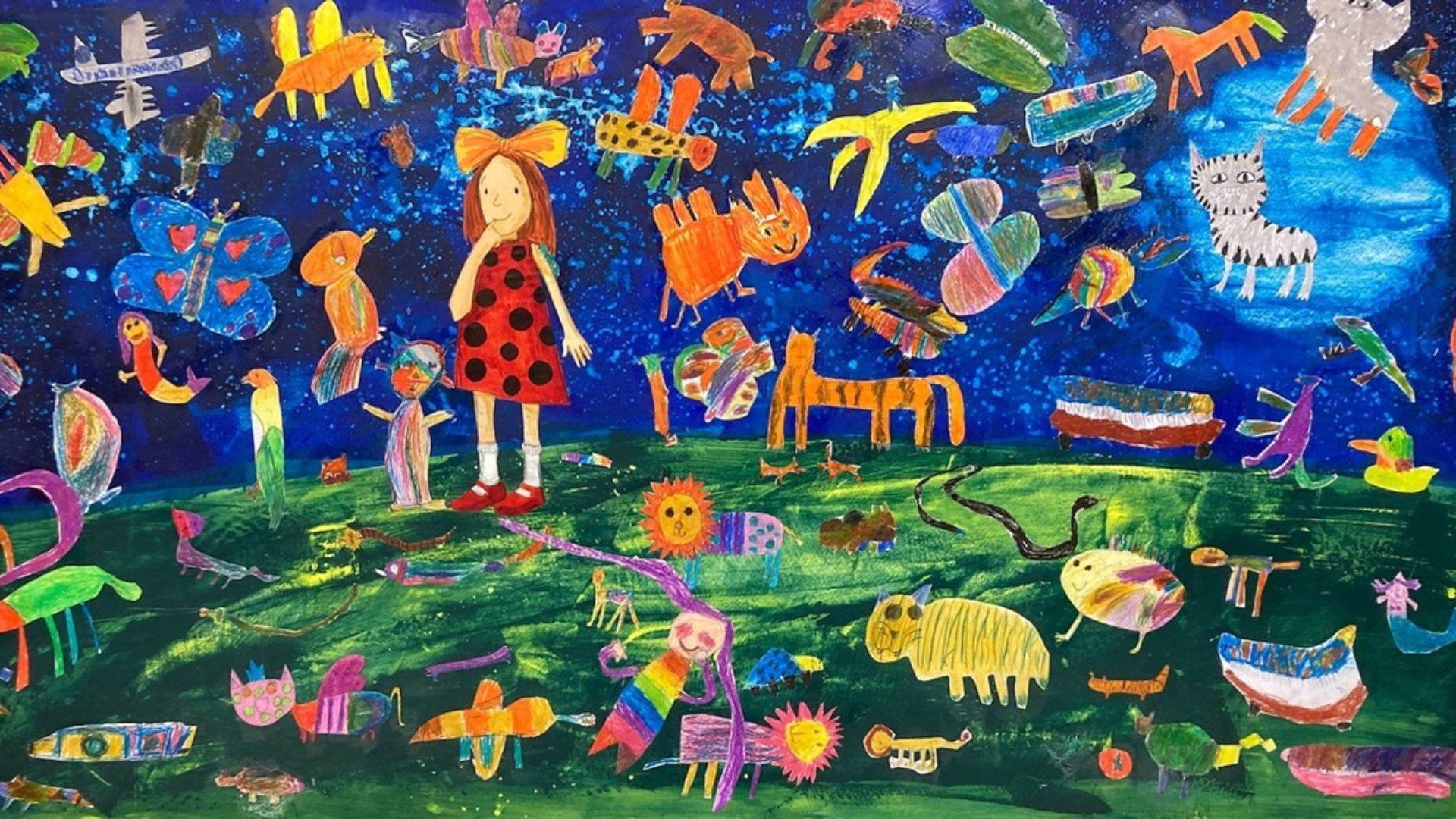Why picture books are crucial to child development and education
Published on: 23 February 2023
Author and illustrator Petr Horacek explains why he’s so passionate about talking about artwork in picture books with children.

Picture books can be enjoyed at any age
Before we understand words, before we speak a language, we learn about the surrounding world through our eyes. Children are incredibly observant, capable of absorbing any new information given to them in a visual form.
It’s only later in our life, with our language being developed, with our ability to label everything with a name and with the ability to make assumptions, we become less observant, less curious.
The importance of picture books is often misunderstood. When children are learning to read, they’re often encouraged to abandon picture books and start to read more “grown up” chapter books. This is a big mistake.
There is no age limit for a child, or an adult in fact, to enjoy a picture book. Picture books are, and should be seen as, a specific form of art.
A good picture book doesn’t just teach a child to read and love books. It also develops imagination and teaches them to understand art. A picture book is often the very first time a child is introduced to visual art.
How to choose a picture book for your child
Choosing a good picture book for a child is not easy. There are many picture books and not every one of them is going to be a masterpiece. But it’s definitely worth researching. We should get familiar with the book before we introduce it to a child. One of the reasons is that by reading the book aloud to a child we’re acting, we’re becoming performers. The timing, the intonation of our voice is important. The text in a picture book is often short, but it’s very carefully chosen: the timing of the story, the balance between the text and the illustrations is a huge part of a good picture book.
Reading a picture book needs time. Most of the story happens in between the pictures, as we’re turning the page. We can let children participate in the story, asking them “what is coming next?” Let them point out an important detail in the picture, let them be involved in the story.
It’s fun to talk about the book and what happens in the story, as well as to talk and discuss the artwork in the book. As I mentioned before, children are very observant, and good illustrators take care over the facial expressions of the main characters, the body language of the characters, and the atmosphere and the mood in the book, which can be created sometimes just by the colour. It’s interesting to discuss the artwork in the book in more detail sometimes, too – what materials were used, for example.
Getting creative with pastels and collages
I often visit primary schools where I read my books, draw and do workshops with children. Sometimes I paint a big board and place one of my favourite characters into a picture. I ask children to finish the picture by drawing their own characters. We create a magic garden party, new stories. We draw on separate sheets of paper, using oil pastels. Oil pastels are an easy material to draw with and it’s great for mixing colours. I spend time explaining to the children how to get the most out of the materials and how to mix colours. Later, we cut out the images and collage them onto the board I’d previously prepared and painted. It’s a great opportunity for children to work together on a piece of art, which then stays in the school.
Another possible workshop is to let children study and draw their own picture book characters. It could be an existing character from their favourite picture book, a character inspired by their favourite book, or a completely new character drawn from their imagination. They cut out the character and put it to one side. Then they go to a playground, or a park and do a simple observational pencil drawing of the landscape (they can also draw from imagination). Later, they collage the picture book character into the picture.
The collage technique makes not just the image visually stronger, but it makes a child understand and appreciate the difference in art techniques, texture, perspective and scale in a picture. This kind of workshop is fun and it always brings new ideas and opens discussions. That’s what art and literature should be about.
Peter Horacek's The Perfect Present is available now.
Topics: Picture book, Features





